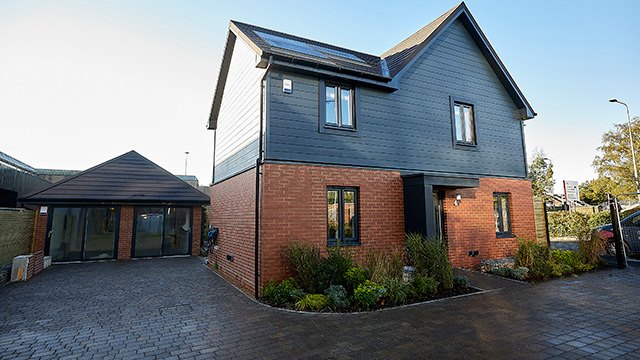
Developers say a new zero-carbon Z House in Salford “showcases the future of sustainable living in the UK”.
Introducing the Z House – our flagship, zero carbon concept home that will showcase the future of sustainable living in the UK.#BuildingSustainably #NetZero #Cop26 pic.twitter.com/3wAsUGgPkl
— Barratt Developments (@Barrattplc) October 25, 2021
Today, Barratt Developments revealed their Z house, the first home in the UK built by a major housebuilder that goes significantly beyond the Future Homes Standard.
With climate change and humans’ impact on the planet becoming an increasingly concner, there is a major need for houses to become more eco-friendly.
The Z House is Barratt Developments answer to this problem.
The project was developed in partnership with more than 40 leading organisations from housebuilding, sustainability and technology sectors.
These partners include the University of Salford, British Gypsum, Nissan and Mitsubishi, plus a range of many more suppliers.
The Z House was built using the latest building methods, which cut construction times in half and reduced the need for bricklayers.
It will test and keep track of the latest sustainable housing technology.
This technology includes: an air source heat pump, infrared panels, plaster that eliminates pollutants, a fridge that keeps food fresh for longer, air-powered showers, electric vehicle charging point and PV solar panels.
It also includes heated skirting panels, which deliver 10% more heat than traditional radiators while also saving space.
The home will also be lived in by a university academic, who will help the organisations involved better understand what the zero carbon lifestyle is like for a customer.
Barratt Developments is committed to building sustainably.
It has pledged that all of its new homes will be zero carbon by 2030 and the Z house is Barratt’s first step to achieving that goal.
From the electronic taps, to the coconut husk cupboard handles, this house is one of the most renewable homes in the UK.
Professor William Swan, director of Energy House Laboratories, said: “Our leading Energy House Laboratories are in close proximity to the house and will play a pivotal role in exploring the energy performance of this industry-first home making a vital contribution to the future of housebuilding in the UK.”















Recent Comments